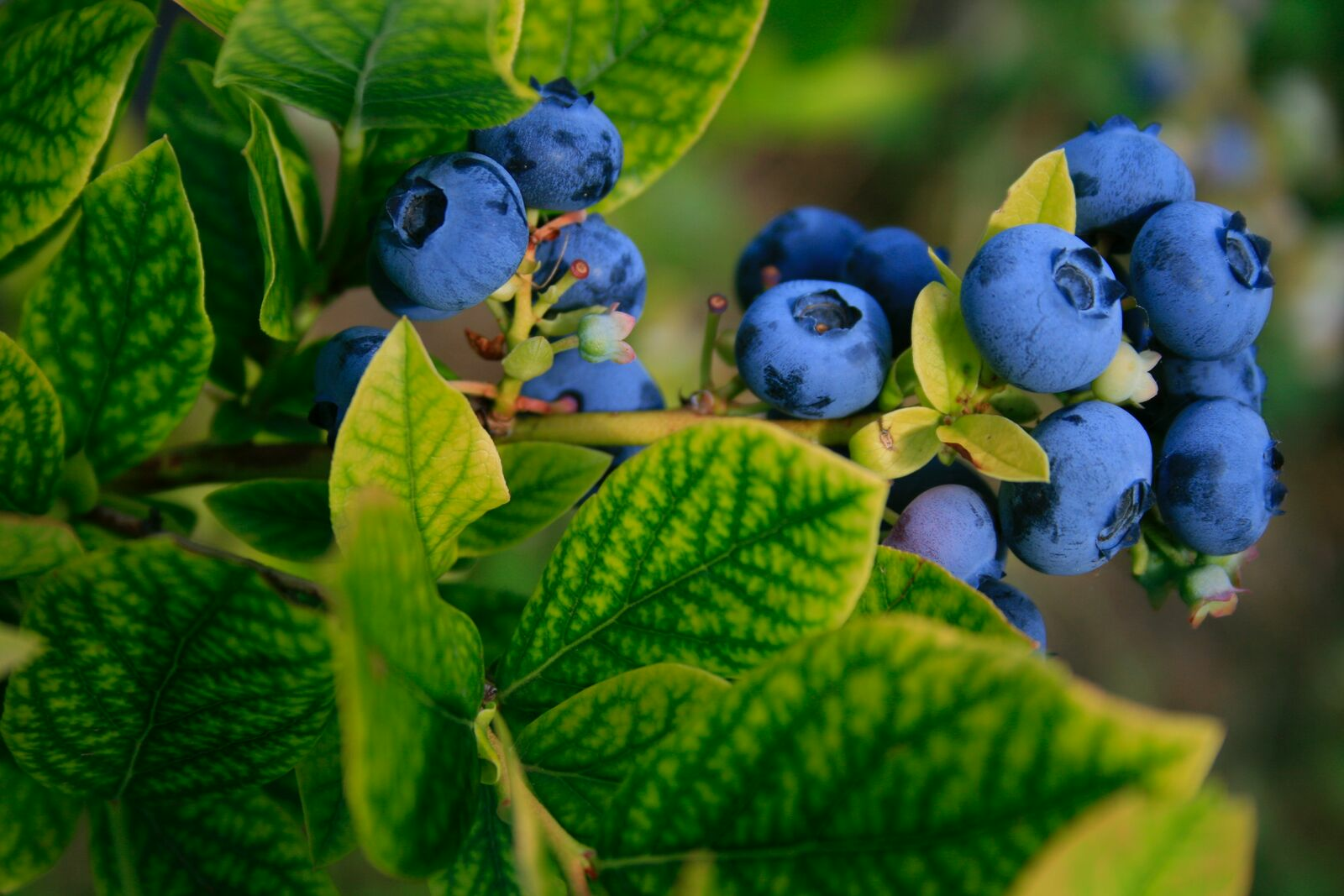
Planting & Growing Blueberries: Cultivation, Care & Harvest
Blueberries and bilberries are a popular and very healthy fruit during the summer months from June to September. They are rich in vitamins and minerals, but at the same time very low in calories. How to properly plant, care for and harvest blueberries, you will learn in this article.
This Article Contains:
- Blueberries & Bilberries: The Difference
- Blueberries & Bilberries: These Types Exist
- The Right Location & Soil
- How and When to Plant Blueberries
- Fertilize, Care & Cut Blueberries & Bilberries
- Companion Plants for Blueberries
- Companion Planting Plans With Blueberries
- Blueberries: Diseases & Pests
- Harvest Time: Picking Blueberries
- Store blueberries & Huckleberries
- Frequently Asked Questions About Planting Blueberries
Quick Overview
Grow Blueberries & Bilberries in the Garden
- Soil: Well-drained, acidic (pH: 4 - 5).
- Habitat: Forest blueberries: semi-shade - shade; cultivated blueberries: full sun.
- Space requirement: Flat rooted, between 60 - 200 cm/23.6 - 78.7 in space.
- Care: Plant in fall or spring, fertilize a little in spring, water regularly and prune in fall/winter.
- Winter hardiness: Up to about - 16 ° C/ 60.8 ° F, but sensitive to late frosts in spring.
European Blueberries & Commercial Blueberries
- Bilberry (Vaccinium myrtillus): Groundcover, forms small shrubs close to the ground; easier to care for than cultivated blueberries, but smaller berries that hang singly from the bush.
- Commercial Blueberries (Vaccinium corymbosum): Larger bushes and berries; grow in clusters; higher yield, but also requires more care.
Blueberries & Bilberries: The Difference
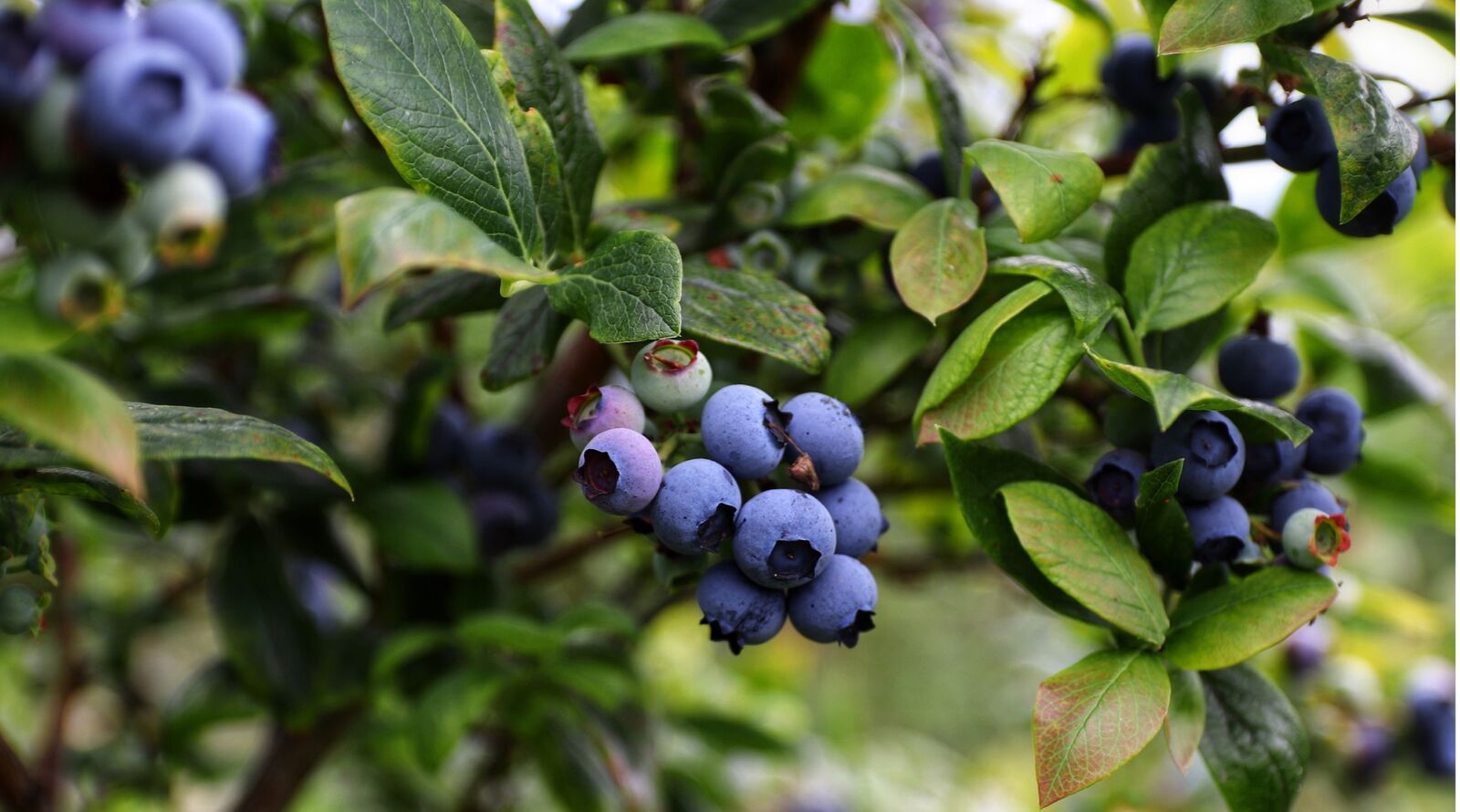
Blueberries (Vaccinium) are part of the heather family (Ericaceae) and grow as shrubs on acidic forest and bog soils. Blueberries and bilberries or European blueberries are different trivial names for different species in the blueberry genus (Vaccinium). However, the term blueberry is often used interchangeably, making it difficult to accurately separate them. Actually, however, only varieties of the species Vaccinium myrtillus are counted as blueberries and bilberries.
Blueberries & Bilberries: These Types Exist
Blueberries are found mainly in the northern hemisphere in forest and moorland areas, as these are often home to acidic soils. Which important species there are, we present to you in the following.
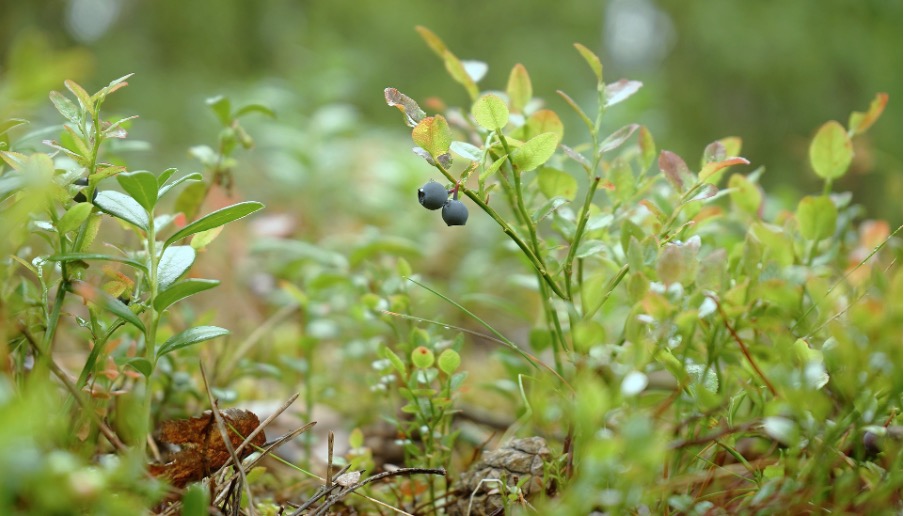
Bilberries: Native Woodland Species in Europe
In Germany and other Nordic countries in Europe is often found the species of forest blueberries (Vaccinium myrtillus). They are also known by the names blueberry, bickberry and hayberry. However, the berries of this species are rarely found in supermarkets, although it is native to the area. It grows on acidic bog and forest soils.
As a ground cover, wood blueberry forms small shrubs close to the ground, spreading by runners and growing only about 0.5 m/19,7 in tall. They are much easier to care for than their relatives, the cultivated blueberries, and live up to 30 years. However, their bushes produce much smaller, intensely aromatic, deep blue berries that hang individually from the bush. Different varieties of the species do not exist, as it has not been cultivated. Under its botanical name (Vaccinium myrtillus), you can find it with a little luck at a garden supply store or in nurseries.
Commercial Blueberries
Commercial blueberries (Vaccinium corymbosum), unlike forest blueberries, are much larger, white inside and grow in bunches. In addition, their bushes grow up to 4 m/4,4 yd tall and thus require much more care and nutrients. They are hybrids of the American Blueberry or in English Highbush Blueberry (Vaccinium corymbosum) and other species of Vaccinium bred for conventional cultivation for size, flavor and yield.
The Right Location & Soil
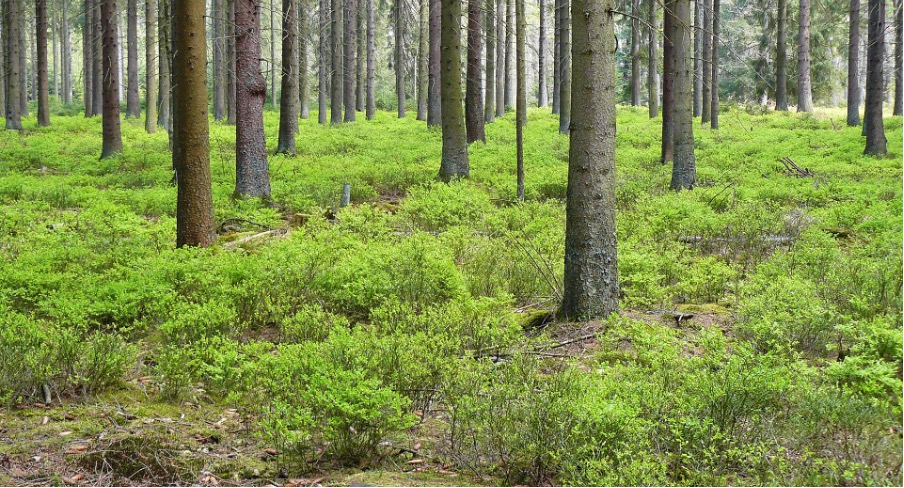
Blueberries and bilberries require soil with an acidic pH (about 4 - 5) for ideal growing conditions. European blueberries grow well in partial shade to shady locations, while commercial blueberries need a full sun location. In addition to the value of their berries as food, the rich berries, buds and leaves also serve as a food source for game and birds and provide shelter and protection for mice and lizards. In addition to blueberries, other fruit trees and shrubs also serve as food or nesting sites for many insects and animals; for more information on this topic, see our article on Planting Fruit Trees.
The soil should also be well-drained, as blueberries do not tolerate waterlogging or irregular moisture in their location. Therefore, loose, well-drained, somewhat peaty or sandy-humic soils are best for blueberries. Calcareous soils are not suitable due to their high pH, and loam and clay soils tend to be waterlogged, which blueberries cannot tolerate.
What Soil for Blueberries?
Since blueberries require quite acidic soil, it is best to measure the pH value before planting in the garden and enrich the soil with some acidic potting soil if necessary. Berry or rhododendron soil, for example, is suitable for this. Planting in a pot is also possible and, depending on the pH of your soil, makes sense if your soil is quite clayey or calcareous, and thus unsuitable for blueberry bushes. Pay attention to the pH of the soil, it should ideally have a pH in the acidic between 4 - 5. Even if blueberries like peaty soil, you should avoid peaty soil, because peat decomposition releases large amounts of CO2 into the atmosphere.
Planting Blueberries in the Pot
Blueberries can also be grown in tubs. However, when planting in a tub, make sure that the shrubs are more susceptible to frost and drought. Compact-growing varieties are more suitable for cultivation in tubs or pots. Also note that some blueberry varieties are not self-pollinating and then need another plant for fertilization. In addition, the yield generally increases once another bush is present.
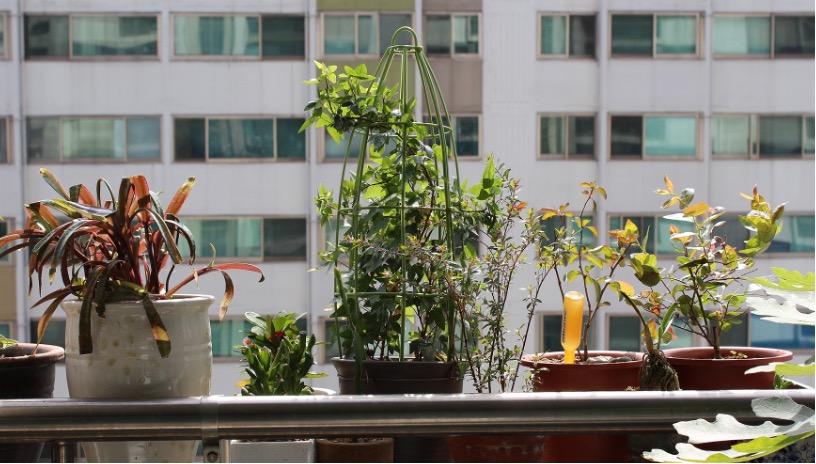
How and When to Plant Blueberries
You can plant blueberry plants in your garden either in spring (March/April) or fall (October/November). In the fall, the soil is still warmed up and the roots can develop well, so that the plant will grow well the next year. To do this, plant your blueberry plant as deep in the ground as it was in the pot and water it well. Planting in the spring causes a little more stress, because the bush then has to produce flowers, leaves and buds at the same time as the roots grow. Therefore, it's best to remove the flowers from your blueberry bush the first year so the plant has enough strength to establish itself in its location.
Blueberries are hardy down to about - 16 ° C/60.8 ° F, but they are sensitive to late frosts in the spring. Therefore, especially in higher and colder regions, you should protect your plants during frosts in the spring and keep them warm. Otherwise, the yield will suffer later in the summer.

Want to Learn More?
In our library you will find information on the individual varieties with cultivation periods, tips on planting and harvesting. You will also find good and bad companion plants to help you plan a mixed crop.
View Library NowFertilize, Care & Cut Blueberries & Bilberries
Wild bilberries are quite easy to care for in the right location and will do well without much fertilization (an application of acidic compost in the spring will keep the pH constant and provide enough nutrients for the season), watering (except in severe drought and sandy soil), and pruning (you can do a topiary every few years). You should be careful with wild blueberries that the soil does not contain too much nitrogen, as this encourages wilt fungus. Commercial blueberries require much more care due to their higher yield. A berry, hydrangea or rhododendron fertilizer works well as a fertilizer. Fertilizing is advisable at planting, in spring and as soon as the first berries form.
The supply of water and nutrients is impaired in blueberries due to the absence of root hairs, making regular and consistent watering very important , especially in hot weather, for all blueberry species. When doing this, ideally use rainwater as this contains less lime than performance water. Otherwise, the pH of the soil will rise too much and your blueberry plants will not feel well.
Forest blue berries may only need a topiary every few years. Commercial blueberries, however, should be pruned every year in late fall or winter for maintenance and a better yield. Old and diseased sh oots should be removed, but also flat lying shoots are best removed so that the plant can put more energy into other shoots.
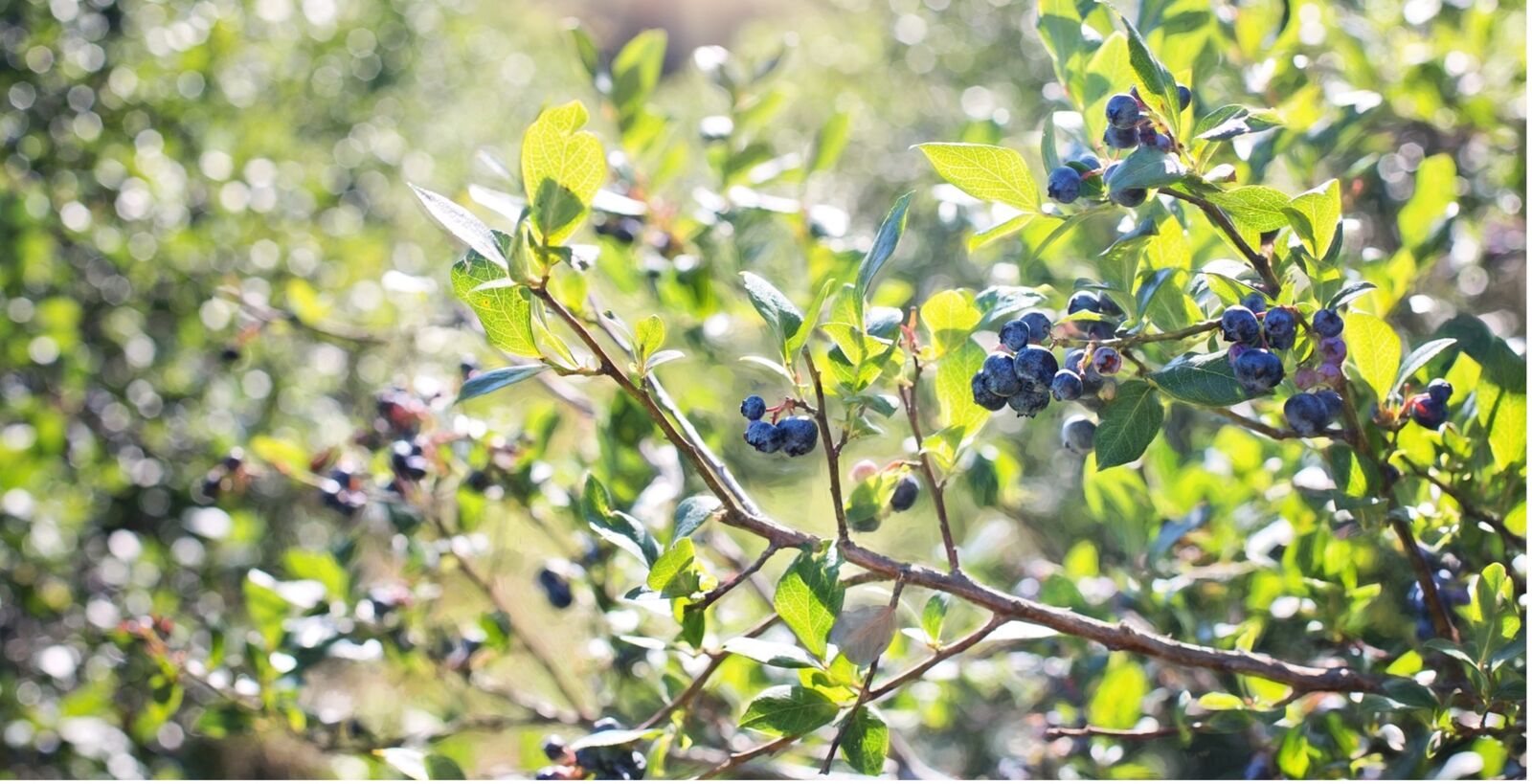
Mulching Blueberrie
A layer of mulch is useful for blueberry bushes, which are sensitive to drought, because it not only keeps the soil moist, but if the mulch is bark mulch, softwood mulch or litter, it also keeps the acidity of the soil constant.
Fertilize Blueberries With Coffee Grounds
Coffee grounds are very suitable for fertilizing blueberries, as their natural acidity keeps the pH value low. However, you should dry the coffee grounds well beforehand, otherwise it tends to mold easily.
Companion Plants for Blueberries
Since blueberries grow well only on quite acidic soils (pH: 4 - 5), their partner plants should also do well in an acidic milieu. Otherwise, however, they have few demands for their companions. Cranberries also often occur in nature in similar places and together with blueberries, so they make good bedding partners. For more information on good and bad companion plants, see our article on Mixed Cultivation.
Mixed Culture Table for Blueberries & Blueberries
| Companion Plants | Antagonistic Plants |
|---|---|
| azalee | hazelnut (likes somewhat calcareous soil) |
| cranberry (good as underplanting) | potatoes (don't like low pH) |
| blueberries (better fertilisation & higher yield) | garlic (dislikes low pH) |
| raspberries | cabbages (do not like low pH) |
| currants | leeks (do not like low pH) |
| rhododendron | privet (likes somewhat chalky soil) |
| roses (like somewhat chalky soil) | |
| chives (do not like low pH) | |
| onions (do not like low pH) |
Plant Blueberries and Raspberries Together
Blueberries and raspberries both do well in acidic soils. Blueberries still like it a little more acidic, but still just overlap with raspberries in their comfort level for pH. In terms of location, cultivated blueberries and raspberries also like it sunny and the soil should be well-drained and not prone to waterlogging. However, both plants are shallow-rooted, so you should plant the bushes far enough apart. How to grow raspberries, you can learn in our article Planting Raspberries.
Companion Planting Plans With Blueberries
In the planting plans with blueberries listed below, you will find some examples of companion planting with blueberries. As the berry bushes remain in the bed for several years, succession cropping and crop rotation are largely eliminated. From small to large beds, everything is possible.
Blueberries: Diseases & Pests
Blueberries are very hardy and rather little susceptible to diseases. The wrong soil milieu with too high a pH or too high a lime content is much more likely to cause a smaller harvest than diseases and pests. Too high pH and lime content can be recognized by the yellowing of the leaves. Diseases and pests that can occur in blueberries are:
- Anthracnose: Fungal disease, orange to pink fruit discoloration & red-brownish spots on shoots & leaves. Remove infested shoots & provide good aeration. Late varieties ('Elizabeth', 'Chandler', 'Berkeley') are sometimes less affected.
- Godronia shoot dieback: fungal disease, reddish-brown coloration of shoots. Remove infested shoots & provide good aeration.
- Frost moth: thin webs in bushes, dropping and wilting of buds. Remove infested plant parts.
- Free-feeding caterpillars: some caterpillars eat blueberry leaves. Collect the caterpillars if they are infested.
- Spider mites: Light to bronze colored speckles. Predatory mites and Phytoseiulus persimilis can help against spider mites.
- Aphids: Aphids rarely appear on blueberries. To learn how to get rid of aphids, see our article on Aphid Control.
- Birds: Birds, like us, love the delicious berries of the blueberry bush. You may want to protect your bushes with netting.
Harvest Time: Picking Blueberries
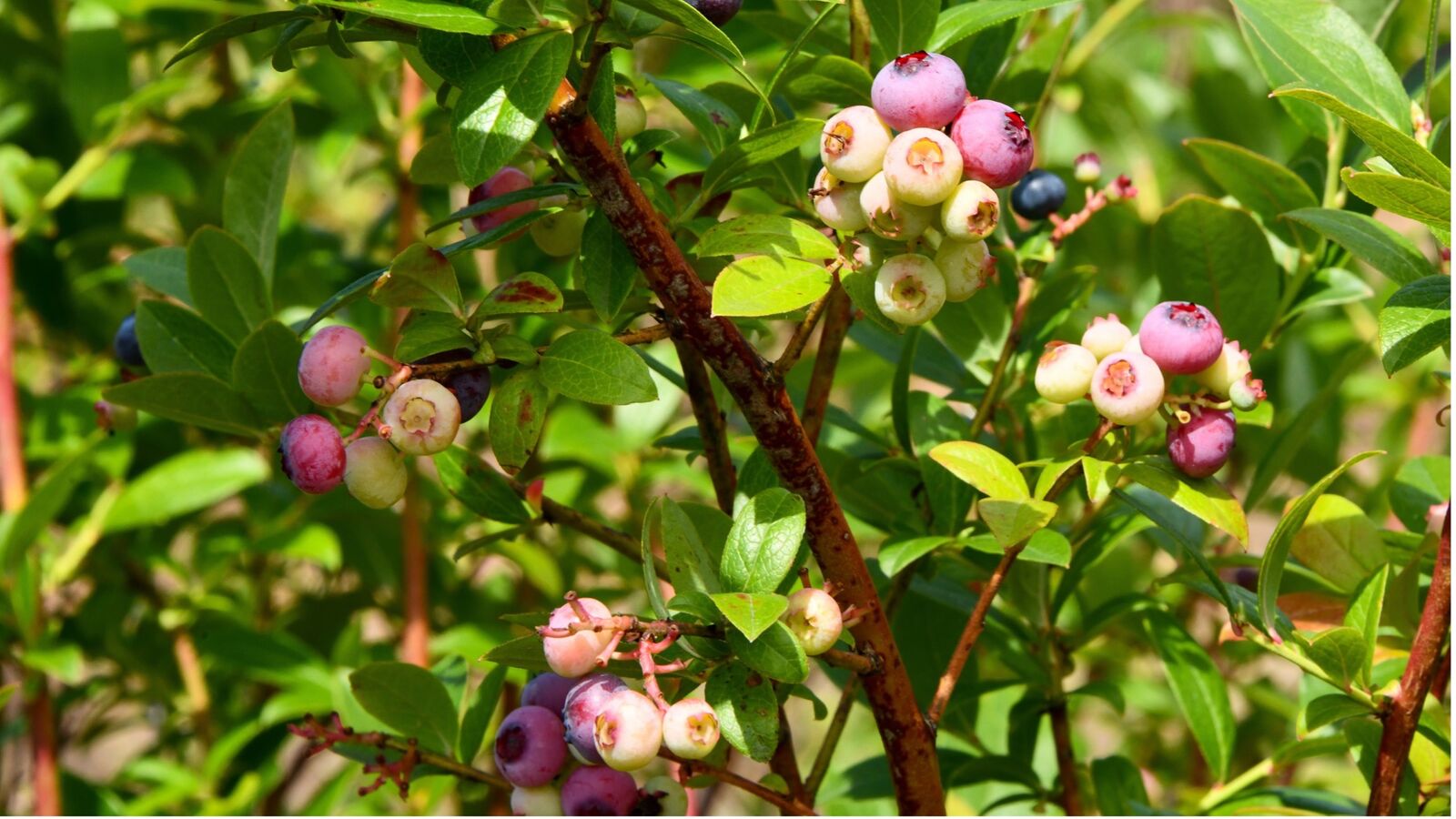
European blueberries are ready for harvesting between August and September , while the first varieties of commercial blueberries start to produce the first ripe fruit as early as June. A berry comb makes it easier for you to pick the individually hanging wild blueberries. Harvest only ripe, deep blue berries that can be easily detached, because they do not ripen later.
Store blueberries & Huckleberries
Blueberries can only be kept in the refrigerator for about 1 - 2 weeks. How you can preserve blueberries beyond this period, you will learn in the following sections.
Preserve Blueberries
Blueberries and blueberries are wonderful to boil down as jam or jelly. This way they can be kept for many months and can be used on bread, pancakes or in cakes. You can also make a syrup from blueberries to keep the delicious berries for longer. For more information on how to store your harvest, read our article on Preserving Fruits and Vegetables.
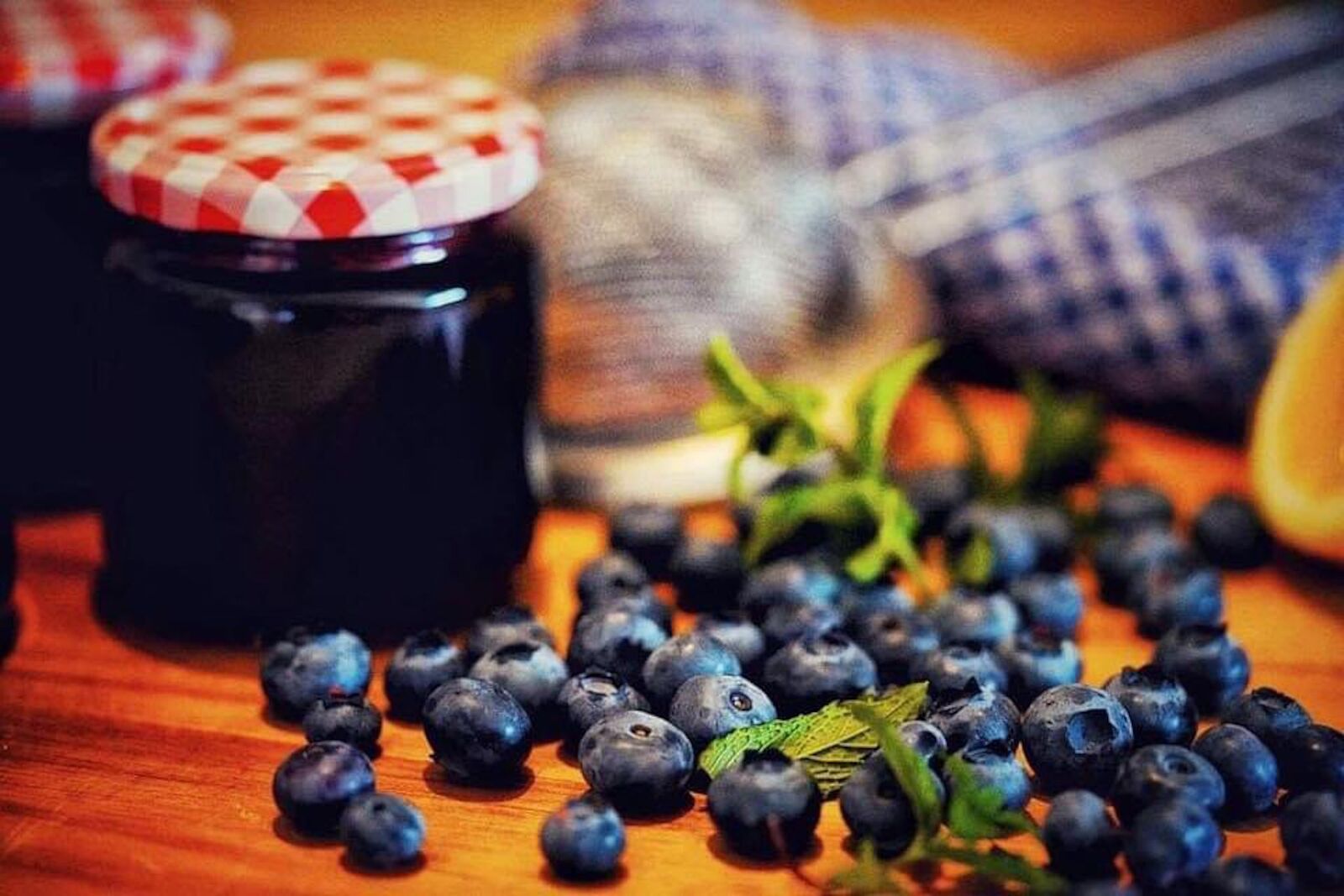
Drying Blueberries
Blueberries can be dried very well in a dehydrator or oven, but also slowly in the air in a dry place or in the sun. At the same time, gentle drying (at about 40 ° C/104 ° F) preserves the vitamins and minerals. If you dry them slowly in the air, make sure there is sufficient air circulation, so you should turn the berries over every day to prevent mold from forming. In muesli and yogurt or as a snack, the berries are edible for several months.
Freeze Blueberries & Huckleberries
Blueberries freeze well in the freezer and can be kept there for up to about a year. Before freezing, however, you should wash and dry the berries well and remove any damaged or moldy berries. You should note, however, that freezing always changes the taste.
For questions and comments, feel free to write us at magazin@fryd.app. Want to get helpful gardening tips throughout the year and plan your own beds for the best? Then register here or download the Fryd app for Android or iOS.
Fryd - Your digital bed planner
Cover image by Élisabeth Joly on Unsplash.
Marielena
Current Topics in the Community
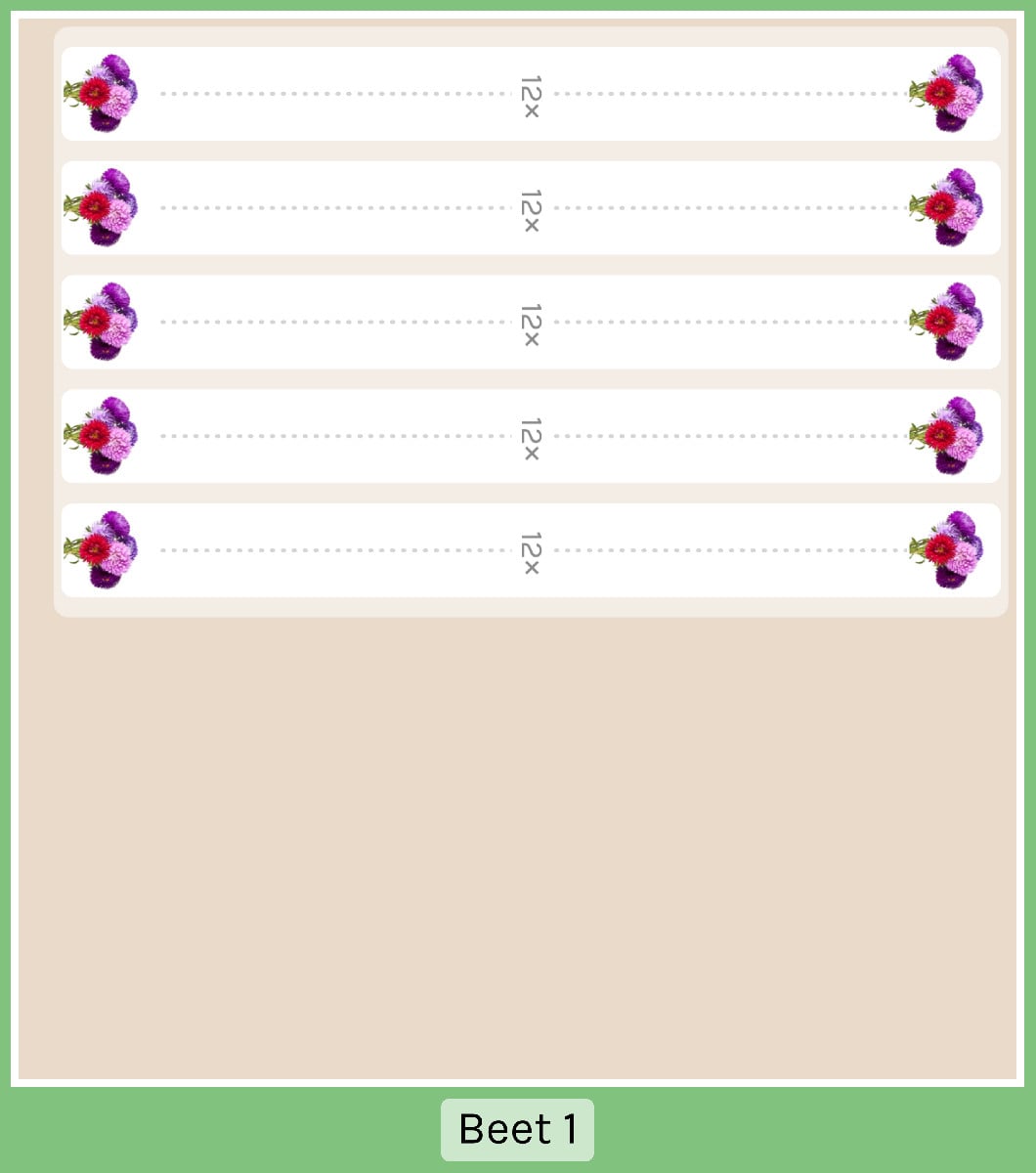


Liked 1 times
@Ufrydpaid_01
Popular Articles

Companion Plants for Carrots: What (Not) to Plant With Carrots

Companion Plants for Celery : What (Not) to Plant With Celery?

Strawberry Types: List of Best Strawberry Varieties

Companion Planting With Strawberries: Companion Plants and Planting Plan

Basil Varieties & Types at a Glance

What to Plant With Cabbage: Good and Bad Companion Plants

Fertilizing Strawberries: Home Remedies & Natural Fertilizers at a Glance

Growing Sweet Potatoes: Tips on Cultivation & Companion Plants

Companion Plants for Kitchen Herbs: Chives, Parsley & Co

What Herbs Can Be Planted Together?
FAQ
You can plant blueberry plants in your garden in either spring (March/April) or fall (October/November).
Where is the best place to plant blueberries?
Blueberries and bilberries require a well-drained, loose, somewhat peaty or sandy-humic soil with an acidic pH (about 4 - 5) for ideal growing conditions in a sunny to shady location.
Blueberries are hardy down to about - 16 ° C/60.8 ° F, but are sensitive to late frosts in the spring. Therefore, you may want to protect your plants against frost during flowering and keep them warm.
When are blueberries harvest time?
European blueberries are ready for harvest between August and September, while in the case of commercial blueberries, the first varieties begin to produce the first ripe fruit as early as June.